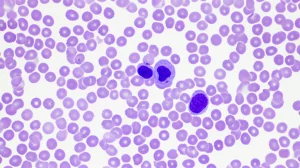Boosting Biodiesel Efficiency: AI Stacking e GANs Unveiled
Hey there! Let’s Talk Fuel!
You know, with all the buzz about climate change and running out of fossil fuels, finding cleaner energy sources is a pretty big deal. We’re talking about things like hydrogen, natural gas, and, importantly, biodiesel! Biodiesel is super cool because you can make it from stuff like veggie oils or even old cooking grease. It’s renewable, biodegradable, and generally better for the planet than regular diesel. Plus, you can often use it in existing engines without major tweaks. Pretty neat, right?
But here’s the thing: making biodiesel isn’t always as efficient as we’d like. Getting the absolute highest amount of fuel from your starting materials at the lowest cost and fastest time? That’s the golden ticket. Traditionally, figuring out the perfect recipe – like how much methanol to use, the right temperature, or the best catalyst – takes *hundreds* of experiments. Imagine doing that over and over!
Enter the Machine Learning Magic!
This is where things get exciting. Scientists have been turning to machine learning (ML) to help crack this optimization puzzle. Think of ML models as super-smart pattern detectors. They can look at loads of past experiments and figure out how different factors (like temperature or catalyst amount) influence the final biodiesel yield. Models like Random Forest, XGBoost, and even Deep Neural Networks (DNNs) have shown they can predict yield pretty accurately.
However, even these smart individual models have their off days. Sometimes one model is great at predicting under certain conditions, but not so much under others. It’s like asking three different experts for advice – they all have good points, but their recommendations might not perfectly align.
The Big Idea: Stacking Up the Smarts
So, what if you could take the predictions from several different ML models and then have *another* model figure out the best way to combine those predictions? That’s the core idea behind “ensemble learning,” and specifically, the “stacking” method used in this study. It’s like getting advice from our three experts (Random Forest, XGBoost, DNN) and then having a fourth, super-wise friend (a Linear Regression model in this case) listen to all their advice and make the final, most reliable decision.
This stacking approach is designed to smooth out the weaknesses of individual models and leverage their combined strengths. The result? Hopefully, a more stable, accurate, and trustworthy prediction of how to get the best biodiesel conversion efficiency.
Boosting the Data with a Little Help from AI Friends (GANs!)
Now, remember how I mentioned that ML models need lots of data to learn effectively? What happens if you don’t have a massive dataset of biodiesel experiments? This is a common problem in research.
This study had a dataset pulled from 72 scientific articles – good, but maybe not huge for training complex ML models. So, they brought in another AI trick: Generative Adversarial Networks, or GANs.
Think of GANs like two competing artists. One (the Generator) tries to create new, realistic-looking data points (synthetic data). The other (the Discriminator) tries to tell if a data point is real or fake. They go back and forth, getting better and better, until the Generator can produce synthetic data that’s almost indistinguishable from the real stuff.
By using a GAN, the researchers were able to generate 4900 *synthetic* data samples based on the original 72 articles. They then mixed this synthetic data with the real data, creating a much larger, richer dataset. This expanded dataset gives the ML models a lot more to learn from, helping them understand the complex relationships between all the production parameters and the final efficiency.

Putting it All Together: The Experiment
So, here’s the game plan they followed:
- Start with the real dataset from scientific papers.
- Use a GAN to generate a bunch of realistic-looking synthetic data.
- Combine the real and synthetic data into one big, augmented dataset.
- Clean and prepare the data (like filling in any missing bits and scaling everything nicely).
- Split the data into training and testing sets.
- Train the individual models (Random Forest, XGBoost, DNN) on the augmented training data.
- Train the stacking ensemble model (using Linear Regression to combine the base models’ predictions) on the augmented training data.
- Test all the models on the unseen testing data to see how well they predict biodiesel conversion efficiency.
They looked at key factors like the methanol-to-oil ratio, catalyst type and amount, reaction temperature, and reaction time – all the things that really matter for getting a good yield.
The Results Are In! (Spoiler: It Worked!)
Okay, so how did this fancy stacking-with-GANs approach actually perform? Pretty darn well, it turns out!
When they first tested the ensemble model *only* on the original, smaller dataset, it did better than individual models, but the R2 score (a measure of how well the model’s predictions match the actual results, closer to 1 is better) was 0.45. The individual models were even lower (some even negative, which is… not great).
But when they trained the models on the *augmented* dataset (real + synthetic data), the performance jumped significantly! The individual models improved a lot, getting R2 scores around 0.77-0.78. But the stacking ensemble model based on Linear Regression? It hit an R2 score of 0.81!
That 0.81 R2 score shows that this combined approach, powered by the expanded dataset, is really good at predicting biodiesel conversion efficiency. It’s like a 4% improvement over the best individual models, which is a solid gain in the world of scientific modeling.
They also checked other metrics, like Mean Absolute Error (MAE) and Mean Absolute Percentage Error (MAPE). The MAE was 1.01 and MAPE was 1.03%, which are super low error rates. This means the model’s predictions are, on average, very close to the actual conversion efficiency values. It effectively compensates for where individual models might stumble, giving more stable and reliable predictions.
Why This Matters
To the best of the researchers’ knowledge, this is the *first time* someone has used this specific Linear Regression-based stacking method combined with GAN-enhanced data specifically for boosting biodiesel conversion efficiency.
This study really highlights two key things:
- Ensemble Learning Rocks: Combining multiple models is a powerful way to get more accurate and reliable predictions than relying on just one.
- Synthetic Data is Your Friend: When you don’t have tons of real data, using smart techniques like GANs to create synthetic data can significantly improve your model’s ability to learn and predict.
This means we might be able to optimize biodiesel production processes much faster and more cost-effectively in the future, potentially reducing the need for all those hundreds of physical experiments. That’s great news for scaling up renewable fuel production!

Looking Ahead
Of course, science never stops! The researchers suggest that future work could involve using even larger and more diverse datasets, maybe exploring even more complex ways to combine models (different ensemble strategies), or diving deeper into advanced deep learning architectures.
They also mention cool ideas like integrating these models into real-time systems to constantly monitor and optimize production, or using techniques to understand *why* the model makes certain predictions (like seeing which input factors are most important). And, naturally, looking at the environmental and economic impacts alongside the efficiency gains is crucial for making sustainable energy solutions truly work.

Wrapping it Up
So, there you have it! This study shows that by cleverly combining different AI models using a stacking approach and boosting the training data with synthetic samples generated by GANs, we can significantly improve our ability to predict and optimize how efficiently we make biodiesel. It’s a smart step forward for renewable fuels and a great example of how cutting-edge machine learning can help us tackle real-world challenges. Pretty inspiring, if you ask me!
Source: Springer







